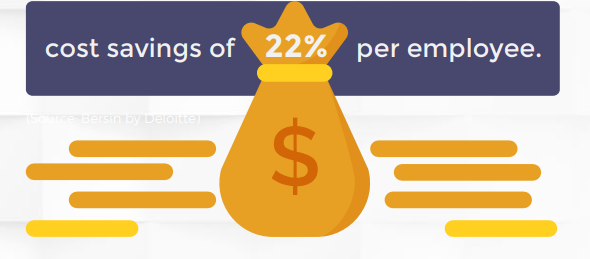Introduction
A Human Resource Information System (HRIS), is a software solution for small to mid-sized businesses to help automate and manage their HR, payroll, management and accounting activities.
An HRIS generally should provide the capability to more effectively plan, control and manage HR costs; achieve improved efficiency and quality in HR decision making; and improve employee and managerial productivity and effectiveness.
An HRIS generally should provide the capability to more effectively plan, control and manage HR costs; achieve improved efficiency and quality in HR decision making; and improve employee and managerial productivity and effectiveness.
Why opt for an HRIS
- Reduction of recurring tasks through automation.
- Speedy onboarding made possible by mobile accessibility.
- Reduction of paper and related materials and storage – often yields cost savings.
- Ease in distributing up-to-date materials concerning company policies and procedures.
- Potential for greater employee engagement through self-service options.
- Empowerment of employees to change benefits information directly as changes occur.

- Improved collaboration throughout organization, even when there are multiple company locations.
- Improvements in training capabilities through integration with LMS and development tracking features.
- Scheduling optimization with emphasis on compliance and\immediate distribution to employees.
- Reduction of errors in payroll and employee information database.
- Improved time and attendance tracking abilities and accuracy.
- Ability to make more informed decisions in real time by using analytics and integration of organizational data.
- Decrease in compliance woes aided by alerts and automatic reporting options.
Companies with newly upgraded HR systems
 Spending on cloud-based HR software is growing faster than spending on installed or
on-premises HR software, and cloud-based HR software accounts up to 50% or more of total HR technology spending.(Source: Gartner)
Spending on cloud-based HR software is growing faster than spending on installed or
on-premises HR software, and cloud-based HR software accounts up to 50% or more of total HR technology spending.(Source: Gartner)
48% of HR and talent professionals want to replace their current HR software with a cloud-based system. (Source: Information Services Group)
How can an HRIS add value to your business?
- Customisable features to suite your requirements.
- Pre-compiled module bundles.
- Multi-country and multi-currency adaptability.
- Analytical insights for visual overviews.
- Mobile access to everything on the go.
- Configure it the way you like it.
- Experience 24/7 global support.
- Boosted business intelligence.
- Highest security standards.
- 30% of your HR costs reduced.
5 key features to a successful HRIS
- Attendance Management
- Accessible on the go
- Self Service
- User Friendly
- Powerful reporting & Analytics
10 must have modules for every HRIS
- Recruitment
- Onboarding
- Performance management
- Administration
- Workforce management
- Absence & leave
- Time & attendance
- Training & development
- Talent management
- HR analytics
Here are a few tips to get to consider before getting choosing the ideal HRIS





